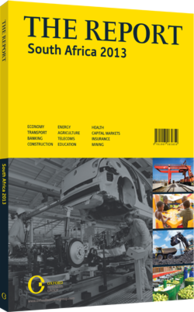OBG talks to Geoffrey Qhena, CEO, Industrial Development Corporation (IDC)

Interview: Geoffrey Qhena
What avenues and challenges are there to establish new trading partners?
GEOFFREY QHENA: The economic challenges in Europe and the US are forcing South African companies to look at alternative markets and partners to diversify risk and create new avenues for growth.
Trade within the SADC (Southern Africa Development Community) is very important because African countries do not trade to the extent that they should. With the exception of Nigeria, African economies are relatively small at the individual level, so it makes sense to cooperate to achieve mutual economic growth. There are, of course, many challenges to doing this – poor physical infrastructure, tariff protection, Customs restrictions, language barriers and the harmonisation of law. But SADC has been looking to overcome these hurdles by creating trade blocs to facilitate the movement of goods and services. Overall, I believe dialogue is moving in the right direction; now the implementation must happen, which is where financing comes in. Financial institutions can provide the capital needed to enable regional investment projects to get off the ground, and the IDC is cooperating with other development financing institutions in Africa and Europe to achieve this.
Alternatively, cooperation between BRICS (Brazil, Russia, India, China and South Africa) members and the prospect of a BRICS development bank is another promising avenue for growth. With proven expertise in banking and finance, South Africa has an opportunity to leverage its position within the group and play a leadership role in BRICS project financing. Further integration of these high-growth countries will open up markets, but it is early in this process and there are still many considerations to be made.
How has the trade environment within SADC evolved over the course of its history?
QHENA: The stakeholders are waking up to the issue of economies of scale and the fact you cannot do everything single-handedly. For example, South Africans are working with Ghanaians regarding inputs for their developing mining sector, so the lines of communication and partnership roles are very clear.
Formerly, decision makers were fixed on doing it alone, but now they understand the interdependency of the international economy and the benefits of collaborative financing. Governments increasingly appreciate the need for cooperation.
Take the case of solar panel production in South Africa. South Africa is investing in solar power generation, although it realises that it makes no commercial sense to compete with China in attempting to manufacture panels domestically. Within the solar space, however, all the secondary components of the panel can be manufactured domestically, which helps create downstream industry and employment. Given the level of governmental investment, we must push for beneficiation where possible.
Have the right industries been identified for moving up the value chain?
QHENA: Due to a lack of domestic processing infrastructure, raw materials and minerals are being exported unprocessed; therefore, value-add processing should be a key component of our industrial growth path.
Industrial policy is always a difficult balance to get right; sometimes target industries may not be the most competitive. But the impact they make, either directly or indirectly, on the economy of the nation as a whole warrant assistance to grow or to sustain them.
For instance, the textiles industry is quite important to the South African economy. While it is not identified under the Industrial Policy Action Plan (IPAP) as a growth sector, it is one to be sustained because of the jobs it creates and because it sources raw materials domestically. In response to this situation, the Department of Trade and Industry (DTI) has developed an initiative to help enhance its competitiveness through modernisation, and to develop niche areas to drive sales on the basis of scarcity rather than price.
You have reached the limit of premium articles you can view for free.
Choose from the options below to purchase print or digital editions of our Reports. You can also purchase a website subscription giving you unlimited access to all of our Reports online for 12 months.
If you have already purchased this Report or have a website subscription, please login to continue.

